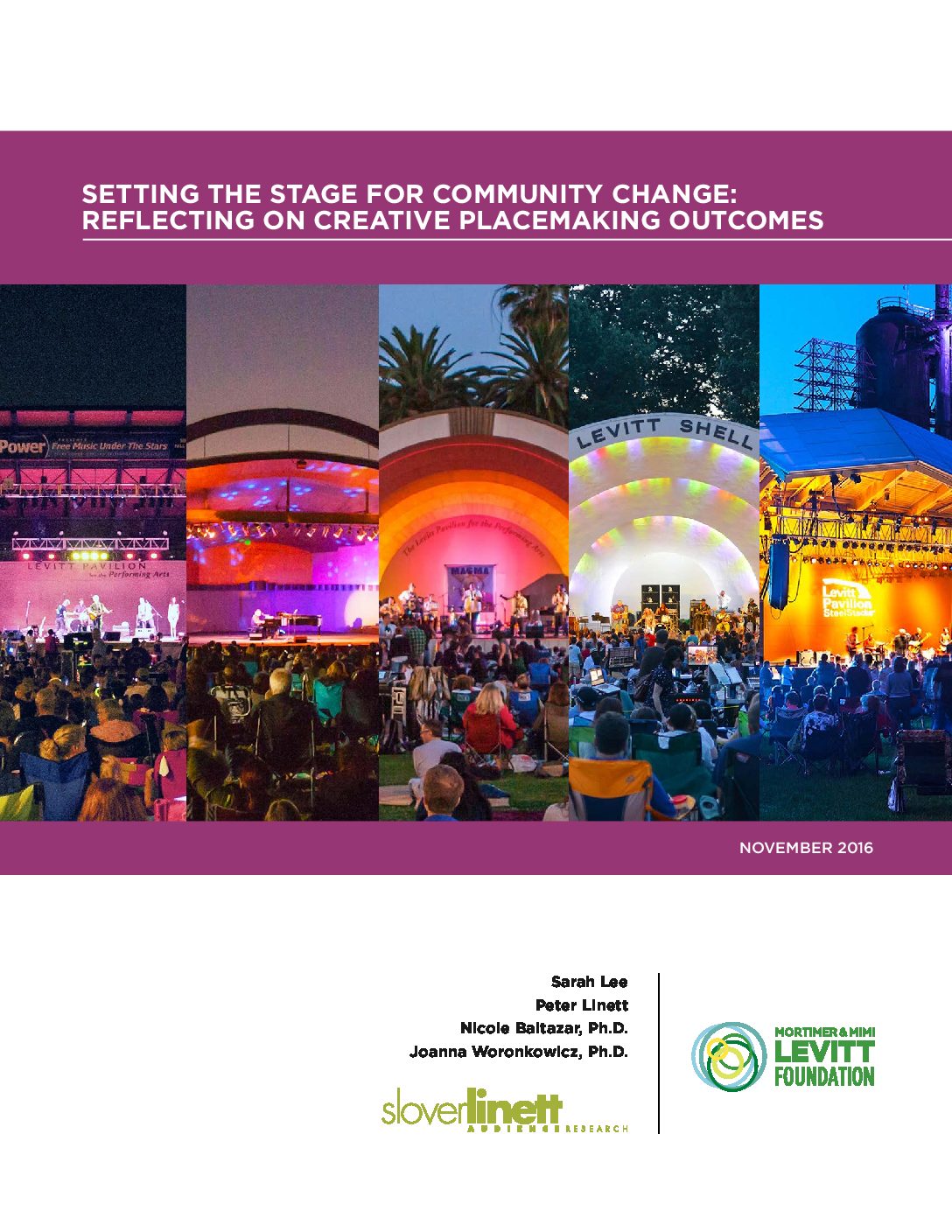Setting the Stage for Community Change: Reflecting on Creative Placemaking Outcomes
When the Mortimer & Mimi Levitt Foundation embarked on this study, we began with one all encompassing question: How do we know if the Foundation’s long-term creative placemaking investments in outdoor, permanent music venues and the nonprofits that manage them are creating the desired impacts—adding vitality to once-neglected public spaces; bringing people together of diverse ages, ethnicities and socioeconomic backgrounds; ensuring access to high caliber concerts through consistent free programming; and, ultimately, strengthening the social fabric of communities? In other words, how do we measure and define “success?”
With these questions in mind, we commissioned a third-party study with Slover Linett Audience Research and Dr. Joanna Woronkowicz to test the assumptions outlined in our theory of change and provide us with a new, data-driven understanding of the social impact of permanent Levitt venues. We hoped the study—a mix of primary research conducted by Slover Linett using qualitative and quantitative methods, and secondary research conducted by Dr. Woronkowicz using a quantitative indicators approach—might inspire refinements or challenge the assumptions underlying our venture philanthropy model and the program itself, with the goal of creating greater impact. We also sought to uncover any unintended effects of these long-term creative placemaking interventions… –Sharon Yazowski, Executive Director, Levitt Foundation and Vanessa Silberman, Senior Director of Communications and Strategic Initiatives, Levitt Foundation

